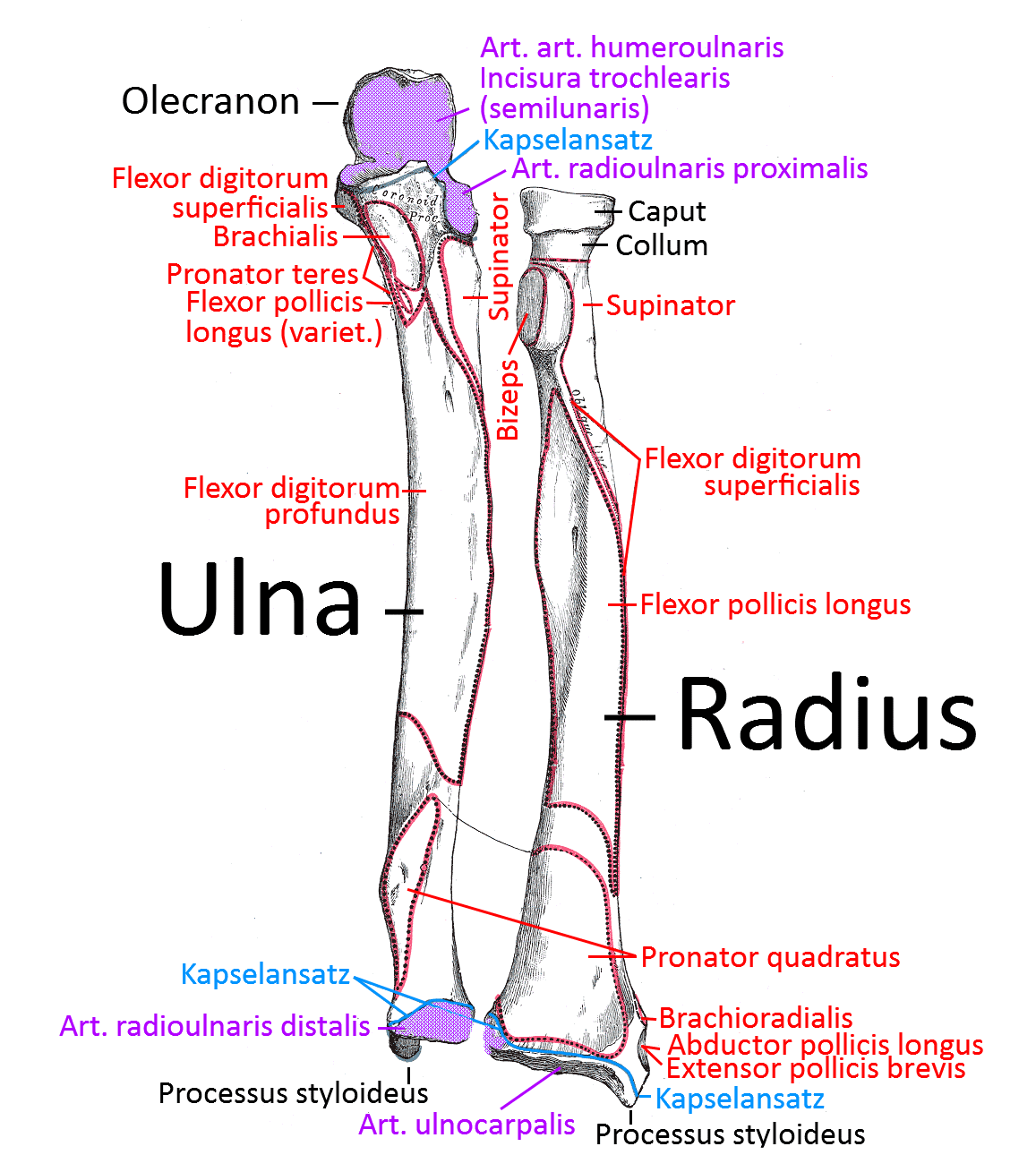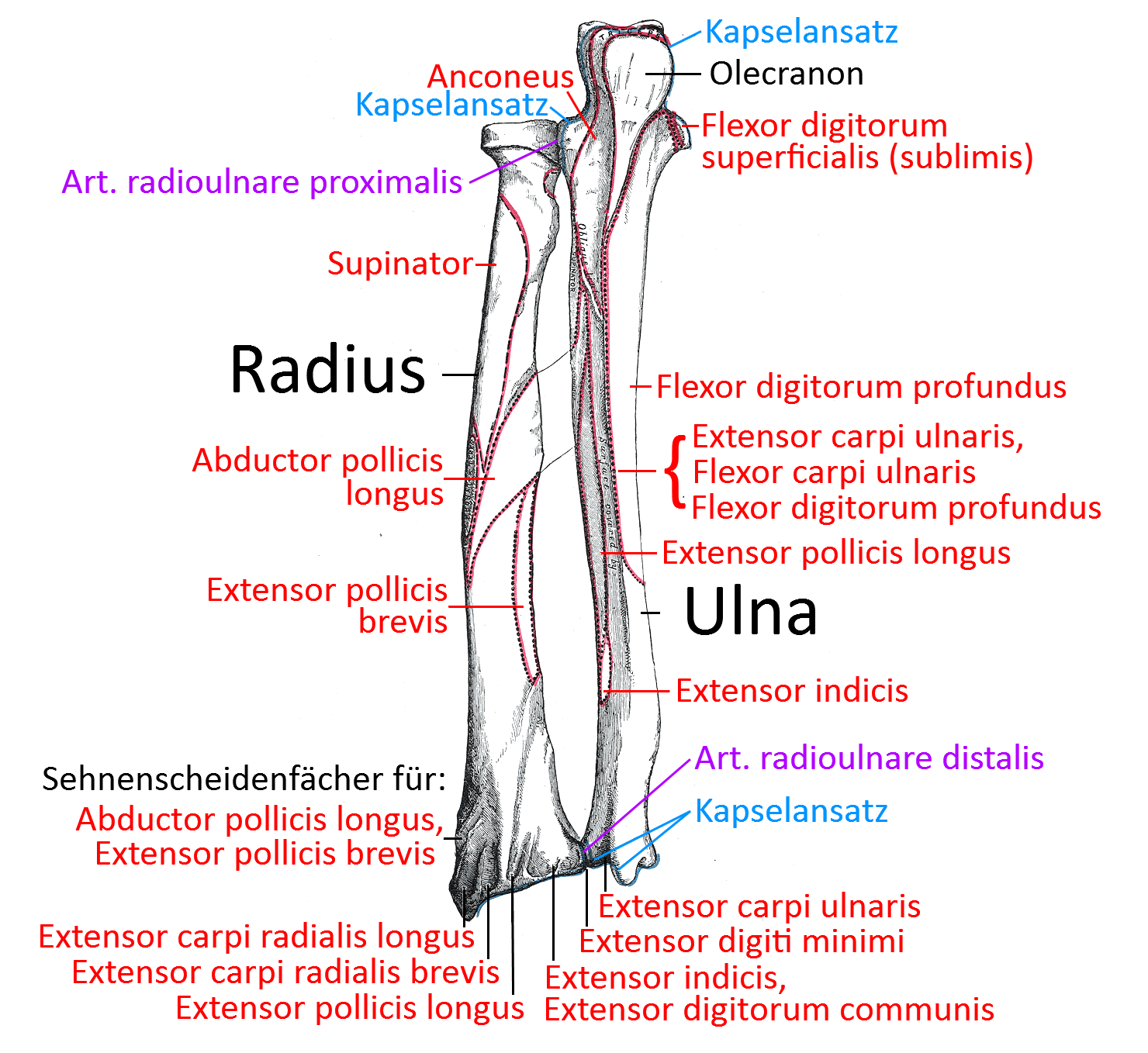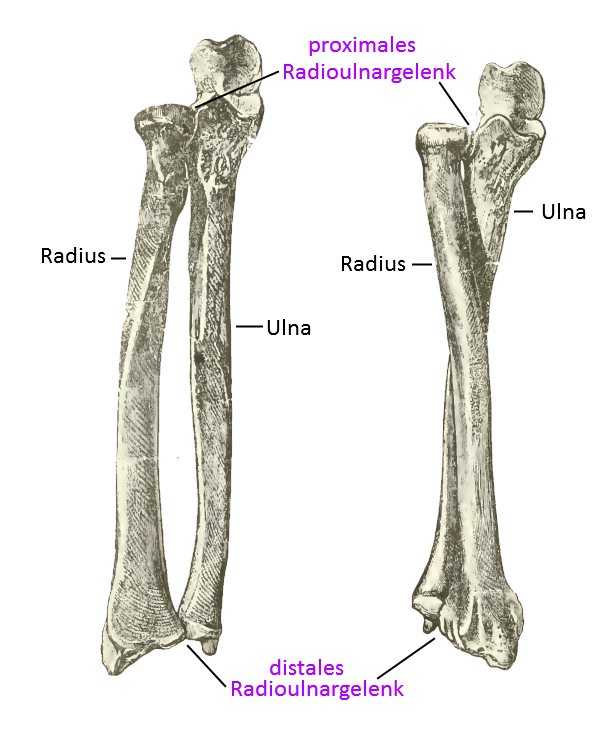Contents
Image: forearm, palmar

Forearm
The forearm (antebrachium) consists of two bones: Ulna and radius, both form a proximal and a distal joint: Art. radioulnaris proximalis in the elbow and Art. radioulnaris distalis at the distal end of the forearm in front of the wrist. The structure of the forearm provides for a turning movement of the radius around the ulna, in which the proximal end of the radius remains stationary except for a rotational movement. The distal end, on the other hand, can be rotated by around 180° in relation to the ulna. The force transmission of a held or moving load takes place from the hand to the forearm in the radiocarpal joint(wrist) between the hand and radius, i.e. without significant involvement of the ulna, but from the forearm to the upper arm in the humeroulnar joint via the ulna. Both bones are connected by a fixed membrane, the interosseous antebrachial membrane.
Membrana interossea antebrachii
Das stabile Band zwischen Ulna und Radius.
Die Membrana interossei antebrachii stellt neben der straffen Verbindung zwischen den beiden Knochen auch eine belastbare Insertion für viele Muskeln dar:
- Musculus flexor pollicis longus
- Musculus flexor digitorum profundus
- Musculus pronator quadratus
- Musculus supinator
- Musculus abductor pollicis longus
- Musculus extensor pollicis brevis
- Musculus extensor pollicis longus
- Extensor indicis muscle (proprius)
Joints
Proximal radioulnar joint
See also the description of the elbow joint, whose partial joint (one of three) is the proximal radioulnar joint.
The two bones, ulna and radius, which run from proximal to distal, provide the supination/pronation movement dimension of the forearm through a turning movement. If the radius rotates around the ulna in the elbow joint (more precisely: in the proximal radioulnar joint as a partial joint of the elbow joint), a corresponding movement must also take place in the distal radioulnar joint.
Distal radioulnar joint
The distal radioulnar joint is the distal joint between the ulna and radius, in which the radius rotates around the ulna to compensate for the movement in the proximal radioulnar joint. The hand rotates in the same way with the distal end of the forearm, as the wrist (radiocarpal joint) only has the movement dimensions of dorsiflexion/palmar flexion and ulnar abduction/radial abduction, but no rotation.
Wrist
The wrist (art. radiocarpalis) is the joint in which the hand with its three carpal bones, the scaphoid bone, the lunate bone and the triquetrum, articulates with the radius of the forearm in an ellipsoid joint. The ulna is only connected via an intervertebral disc.
Elbow joint
The elbow joint is the joint consisting of three partial joints in which the forearm with its ulna and radius bones articulates with the humerus of the upper arm. The partial joints are:
- Proximal radioulnar joint
- Humeroulnar joint, the actual hinge joint of the elbow
- Humeroradial joint, the ball-and-socket joint between the humerus and radius that is significantly restricted by ligaments.
Images
Forearm, dorsal

Radius and ulna in pronation und supination

